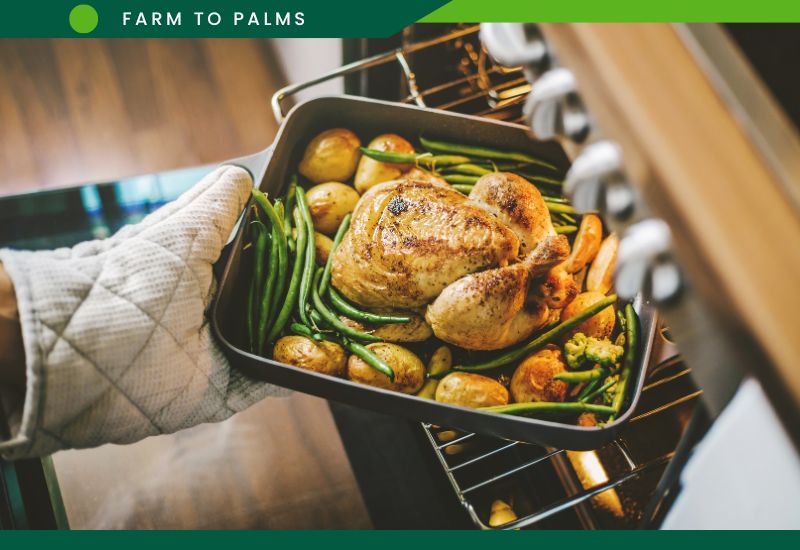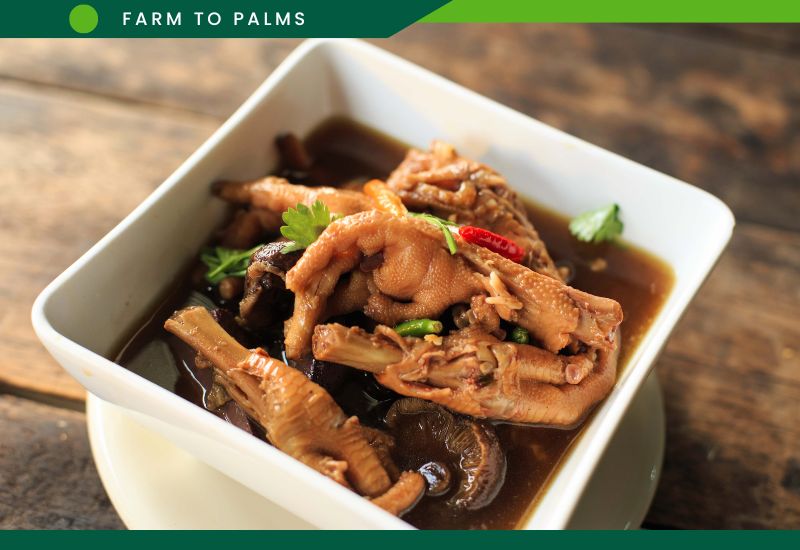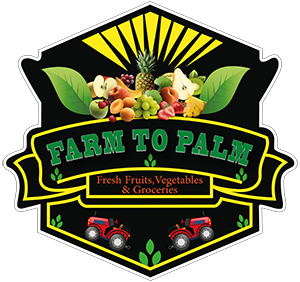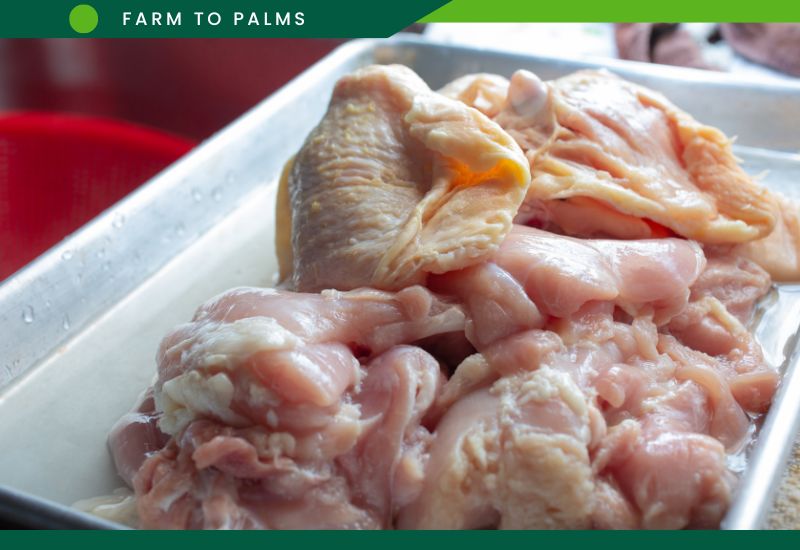Chicken, celebrated globally for its versatility and delightful taste, is an excellent source of lean protein. It is favored by athletes, health enthusiasts, and families for its nutritional benefits.
However, its widespread use raises a significant concern: How long can chicken be safely kept in the refrigerator before it risks spoiling? Understanding its shelf life is essential to minimize food waste and ensure that we consume chicken when it’s at its peak in freshness and flavor.
Shelf life of raw chicken in the fridge (1-2 days)
Raw chicken has a relatively short shelf life compared to other meats due to its high moisture content. This creates a breeding ground for bacteria, which can multiply quickly at room temperature.

According to FoodSafety.gov, storing chicken at a cold temperature (below 40°F or 4°C) significantly slows down bacterial growth, giving you 1-2 days to use it.
Tips for maximizing freshness:
- Double wrap it: Don’t rely solely on store packaging. Wrap raw chicken tightly in plastic wrap or place it in a leak-proof container. This prevents its juices from leaking and contaminating other foods in your fridge.
- Location: The coldest part of your fridge is typically the bottom shelf. This is prime real estate for raw chicken, keeping it at the ideal temperature to slow down bacterial growth.
- Plan your meals: To avoid pushing the limits of freshness, consider thawing frozen chicken in advance if you know you’ll cook it within a day or two.
- Sniff test: Even with proper storage, chicken can spoil. Before cooking, could you give it a good sniff? Fresh chicken will have a mild, meaty odor. If it gives off a funky or ammonia-like smell, discard it to avoid foodborne illness.
Tips you can include for storing raw chicken
- Thaw chicken safely: Never thaw chicken at room temperature. This creates a perfect environment for bacteria to grow. There are three safe methods for thawing chicken: in the refrigerator, cold water, or microwave (if you plan to cook it immediately). For the refrigerator method, thaw the chicken in its original packaging on a plate in the coldest part of the refrigerator. Allow approximately 24 hours per 5 pounds of chicken. Place the chicken in a leak-proof bag for cold water thawing and submerge it in cold water. Change the water every 30 minutes. Cook the chicken immediately after thawing.
- Don’t wash raw chicken: Washing raw chicken can spread bacteria around your kitchen. The bacteria on the surface of the chicken will be destroyed when properly cooked.
- Marinating: If you plan to marinate your chicken in a covered refrigerator container. Discard the marinade after you remove the chicken for cooking; do not reuse it.
Shelf life of cooked chicken in the fridge (3-4 days)
Why cooked chicken lasts longer: Cooking chicken destroys most harmful bacteria, significantly slowing down spoilage compared to raw chicken. However, some bacteria can survive and grow slowly, even in cooked chicken. Proper storage minimizes this risk.

Tips for safe storage of cooked chicken:
- Refrigerate promptly: Cool cooked chicken as quickly as possible and refrigerate it within 2 hours of cooking. This prevents bacteria from multiplying rapidly in the danger zone (between 40°F and 140°F).
- Airtight containers are essential: Store cooked chicken in airtight containers or wrap it tightly in aluminum foil. This prevents the chicken from drying out and helps prevent cross-contamination with other foods in your fridge.
- Cool it down fast: To speed up the cooling process, consider placing the container or wrapped chicken in a shallow ice bath.
- Top shelf placement: While technically safe to store anywhere in the refrigerator, it is ideal to place cooked chicken on the top shelf. This area is generally the coldest and helps maintain a consistent cool temperature.
Bonus tip: Label your container with the date the chicken was cooked. This helps you track how long it's been stored and ensures you use it within a safe timeframe.
Use cooked chicken within 3-4 days of cooking.

This is a general guideline, and freshness can be influenced by several factors:
- Refrigerator temperature: It is critical to keep your refrigerator at or below 40°F (4°C). Colder temperatures significantly slow bacterial growth, extending the safe storage time for cooked chicken.
- Storage container: Proper storage prevents contamination and moisture loss. Airtight containers or reusable wraps are ideal for storing cooked chicken. Avoid using flimsy wraps or bags that could tear or leak.
- Original chicken quality: Freshness matters. Buying chicken with a closer production or purchase date and storing it properly in the refrigerator before cooking contributes to a longer shelf life for the cooked chicken.
Additional tips for optimal storage:
- Excellent cooked chicken quickly: Wait to leave cooked chicken at room temperature for more than 2 hours. This creates a perfect environment for bacteria to multiply. Split large pieces of chicken into smaller containers to speed up cooling.
- Separate raw and cooked chicken: Always store raw chicken separately to prevent cross-contamination. This means using different cutting boards, utensils, and containers.
- Label containers: Date your containers with the cook date to easily track how long the chicken has been stored.
Conclusion
The shelf life of raw or cooked chicken is greatly influenced by its stored conditions. Raw chicken should be kept in the fridge for 1-2 days or in the freezer for up to 9 months, while cooked chicken can be refrigerated for 3-4 days or frozen for up to 6 months.
Proper storage is crucial not only for preventing foodborne illnesses—by inhibiting the growth of bacteria that thrive at room temperature—but also for minimizing food waste. By adhering to these storage guidelines, consumers can ensure the safety and quality of their chicken, ultimately leading to better health outcomes and financial savings.
Visit Farm to Palms supermarket today to enjoy fresh, farm-to-table products! Choose high-quality food, support local farmers, and enhance your family’s health. Shop at Farm to Palms, your trusted source for wholesome groceries!

